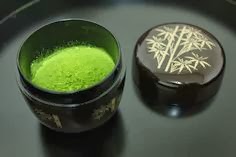Hanabi is the annual Noryo Fireworks Festival. It also known as Fireworks Show which in Summer that can be enjoy in Japan. There have hundred of fireworks show are held every year across every country. It mainly during the summer holidays in July and August. Mostly, it have some hundreds of thousands of spectators to watch Hanabi.
In addition to that, It have a attraction of Japanese fireworks is the relax festival for all the people in Japan. On this famous fireworks days, there will have many people dressed informal clothes which yukata with a party mood begin to waiting for the shows. There also street lined by food stall and game stall to makes people have fun with it. The fireworks shows typically start after sunsets and last one to two hours. The fireworks show may broken up into multiple short segment which interrupt by announcement of titles and sponsors but it often end with a grand finale consisting of hundreds of shells launched the fireworks simultaneously. When the firework are set off to skyward on the first night, It is so fantastic,exciting and romantic for all people who watch it.
Below is the list of some famous fireworks show in Japan :
Tokyo area:
Sumidagawa River Firework
Along the Sumida River around Asakusa Station
The Sumida River Fireworks are recognized as one of the oldest and most famous firework displays in Japan. It launch from barges anchored along the Sumida River between Ryogoku and Asakusa. When the fireworks start, the colorful explosions can be seen from the park along the river. It also the best summer festival atmosphere that accompanies the fireworks. Tens of thousands of people will dress in yukata, stroll the streets of Asakusa especially around Sensoji Temple, whose streets are lined with food vendors and game stalls. In addition, there are lots of restaurants around this old entertainment district provide outdoor seating where you can enjoy some good food and drink while catching what you can see of the fireworks.
In addition to that, It have a attraction of Japanese fireworks is the relax festival for all the people in Japan. On this famous fireworks days, there will have many people dressed informal clothes which yukata with a party mood begin to waiting for the shows. There also street lined by food stall and game stall to makes people have fun with it. The fireworks shows typically start after sunsets and last one to two hours. The fireworks show may broken up into multiple short segment which interrupt by announcement of titles and sponsors but it often end with a grand finale consisting of hundreds of shells launched the fireworks simultaneously. When the firework are set off to skyward on the first night, It is so fantastic,exciting and romantic for all people who watch it.
 |
| Picture of foods and games stall at Fireworks Festival |
 |
| Picture of A girl is fishing for goldfish at Fireworks Festival |
Apart from this, the fireworks competition for good viewing spots may quite strong because the people often show up and reverse the best spots hours in advance. Mostly, the people will choose see at lakeside and the city which tall building to view the fireworks.
Below is the list of some famous fireworks show in Japan :
Tokyo area:
Sumidagawa River Firework
Along the Sumida River around Asakusa Station
The Sumida River Fireworks are recognized as one of the oldest and most famous firework displays in Japan. It launch from barges anchored along the Sumida River between Ryogoku and Asakusa. When the fireworks start, the colorful explosions can be seen from the park along the river. It also the best summer festival atmosphere that accompanies the fireworks. Tens of thousands of people will dress in yukata, stroll the streets of Asakusa especially around Sensoji Temple, whose streets are lined with food vendors and game stalls. In addition, there are lots of restaurants around this old entertainment district provide outdoor seating where you can enjoy some good food and drink while catching what you can see of the fireworks.
 |
| Sumidagawa River Firework |
Tokyo Bay Firework

















.jpg)












.jpg)



